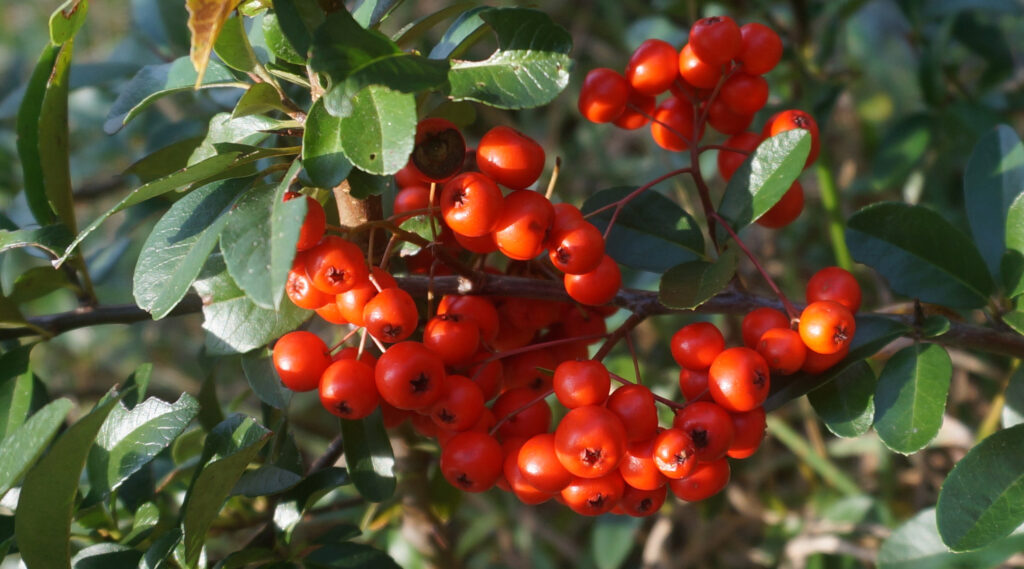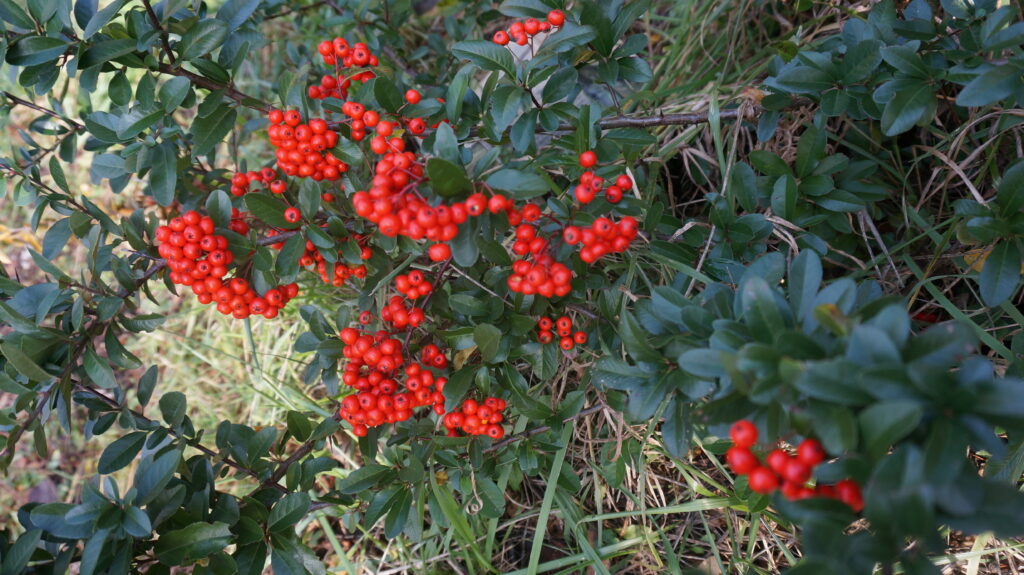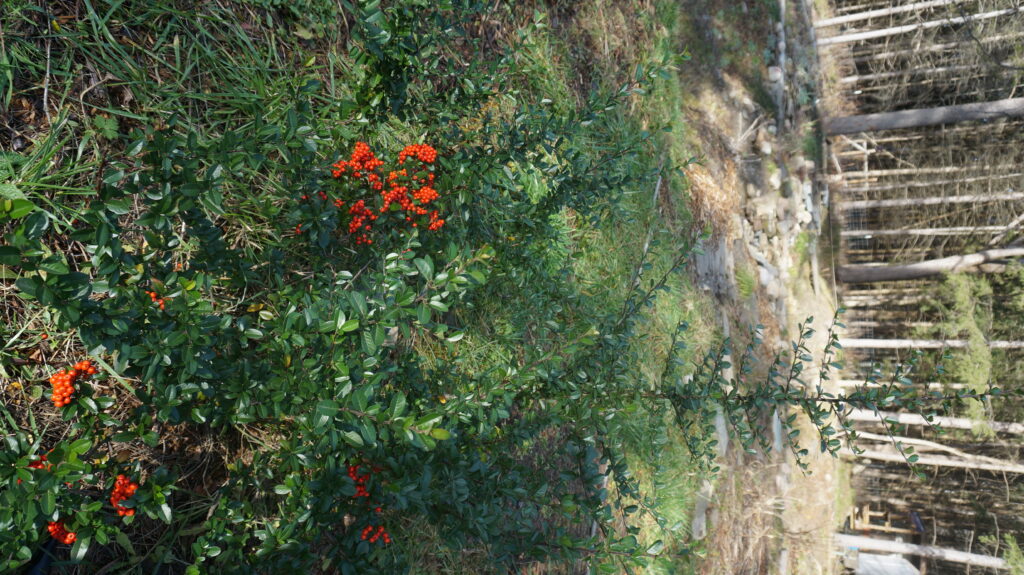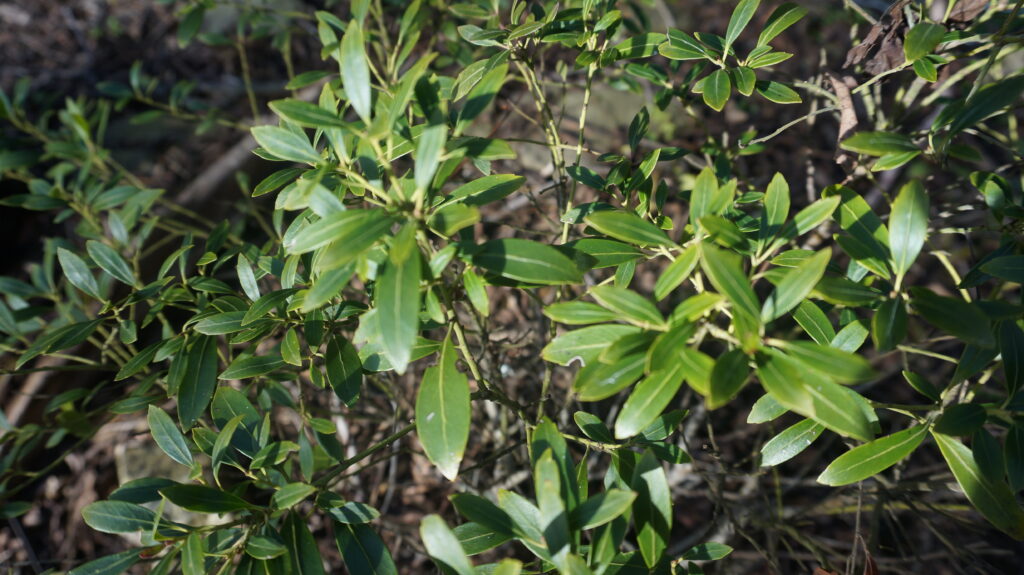Holly–Aquifoliaceae
Fantastic Flora
- By SALLY WHITE-

Most likely, one of the plants decorating your halls this past month was the bright and beautiful holly. The holly growing at our front doors, with glossy leaves and red berries, is probably English or European holly. In the milder climates of England and southern Europe, where it is native, this holly (Ilex aquifolium) can grow into a tree some 70 feet tall.

Living in Colorado, I saw only small twigs of that actual holly on sale each year; here it’s easier to find. Other places can have too much; English holly has become an invasive “weed” in the Pacific Northwest (where it’s commercially cultivated) and California. In New York, it seems that rarely happens.

Of the seven species occurring in New York, six are native, but only two are known from our region. With its evergreen leaves and red berries and large size, American holly most resembles the familiar English holly. This species, Ilex opaca, is the most common native holly nationwide, but it naturally occurs in our area only from eastern New York down to Long Island.
Close relatives provide other options: winterberry (Ilex verticillata), with its red to orange fruits, occurs sporadically in western NY and across the Finger Lakes. It’s known to occur in Ontario and Monroe counties, for example, but not reported in Yates. Although it drops its leaves come fall, it retains winter interest because of the fruits. These also make it a great plant for wildlife. Holly berries are especially popular with birds, but berries of all species are toxic to humans (and dogs!).
Other native species of holly occur in milder areas, especially in southern states. For anyone looking for the upside of climate change, these southern hollies may be a gardening opportunity, especially those found in nearby states. Inkberry (I. glabra), smooth winter-berry (I. laevigata), mountain winterberry (I. montana), and others could step up, along with American holly, as our landscapes shift.

Holiday decorating is over! Why talk about holly now? If you wish to emulate those Olde English Christmases, you’ll leave your holiday greens in place a bit longer, as they did. In fact, greens were so important in freshening homes that different plants were used throughout the year, as noted in Robert Herrick’s poem, Down with the Rosemary and Bays. The Christmas greens remained in place until Candlemas Eve, February 1st, when they were burned and replaced with another winter evergreen, common boxwood (Buxus sempervirens), a familiar plant used in hedges (also not native).
Down with the rosemary and bays,
Down with the mistletow;
Instead of holly now upraise
The greener box for show.
Natives are usually better, but whichever holly you choose, you’ll be giving wildlife a treat. Our native species prefer moist to wet soils and require a male pollinator nearby to ensure lots of those red fruits to brighten your halls. Their beauty makes them popular, so breeders developed a variety of cultivars you’ll be able to choose from if you decide to purchase some for your landscape.
